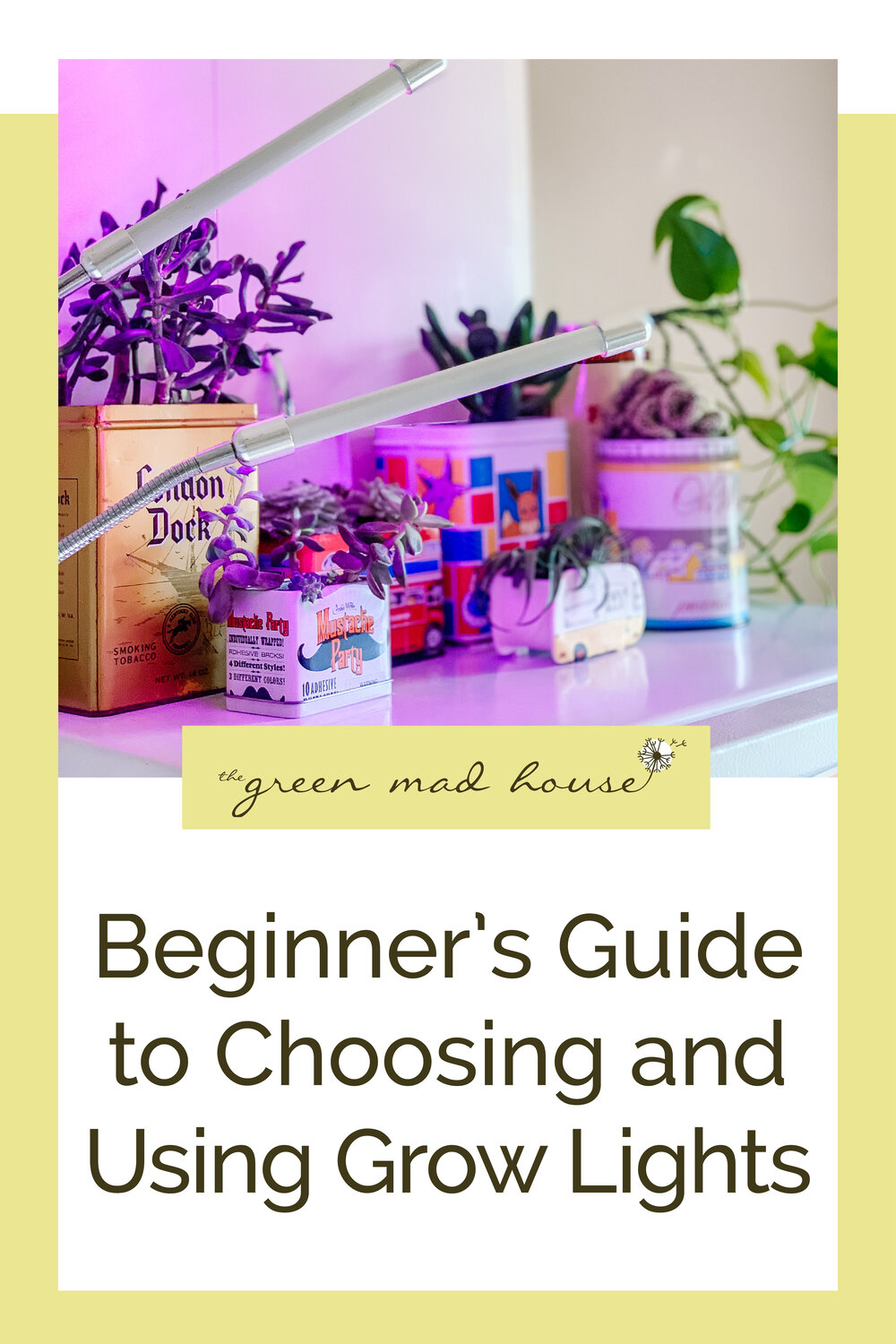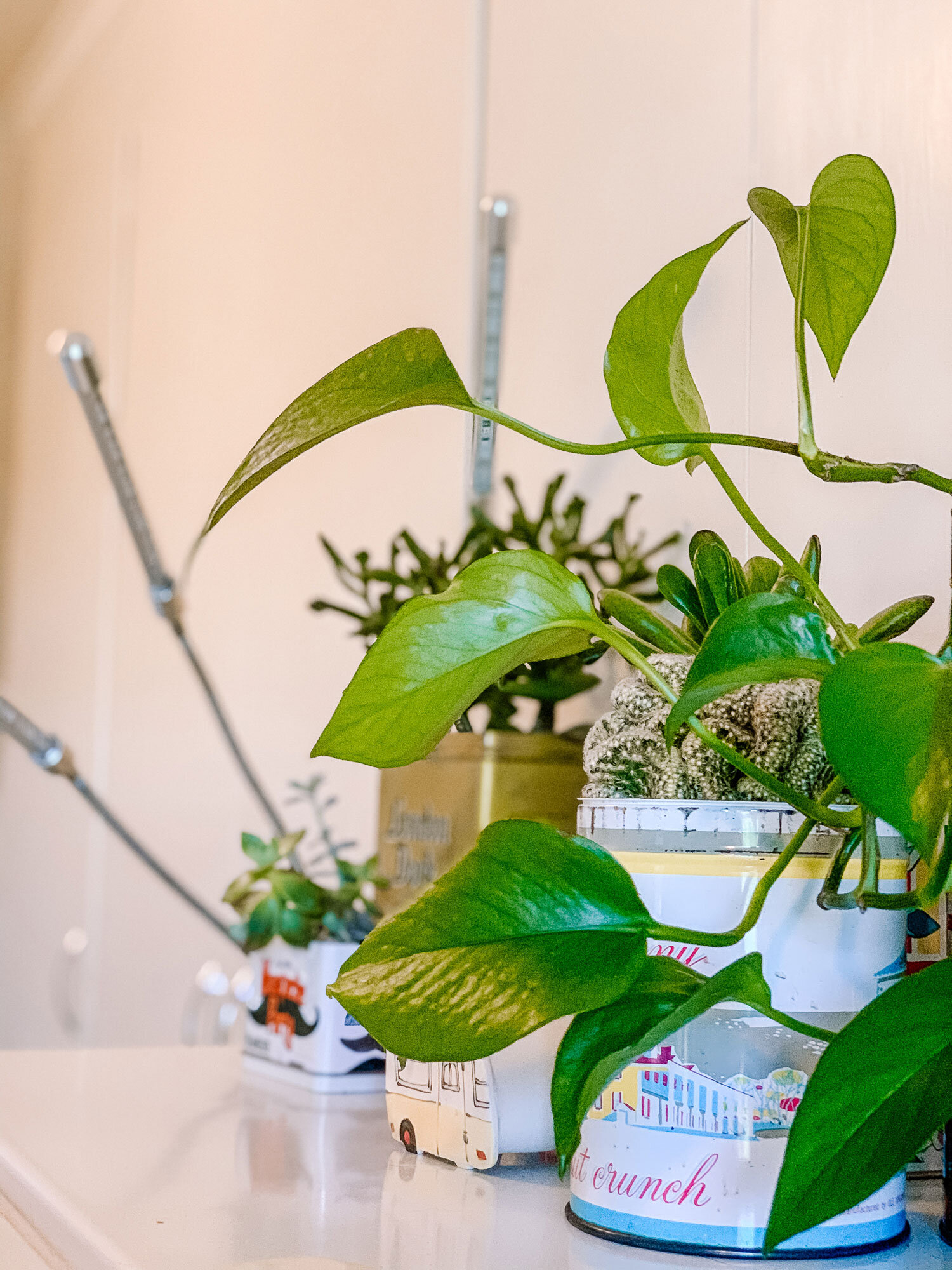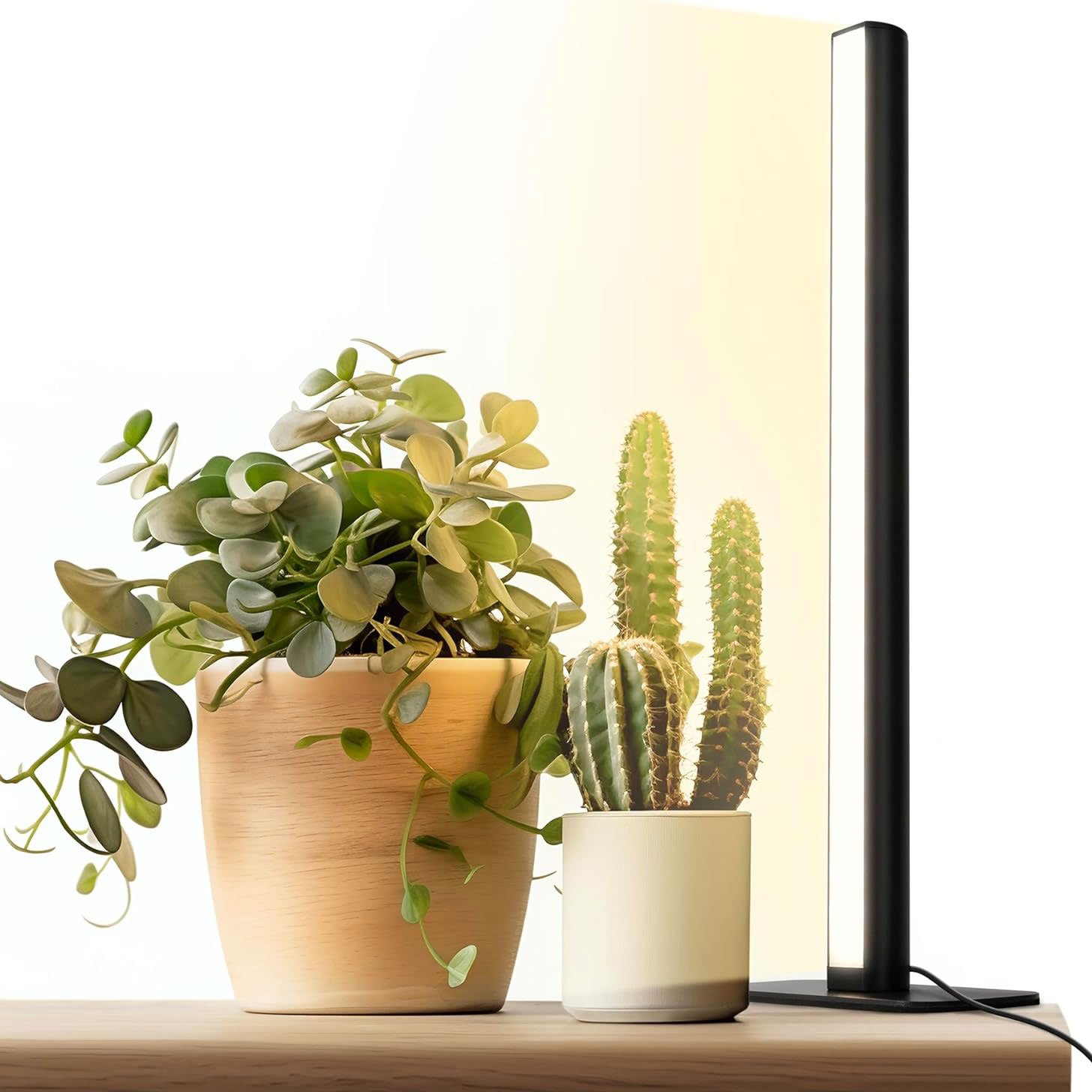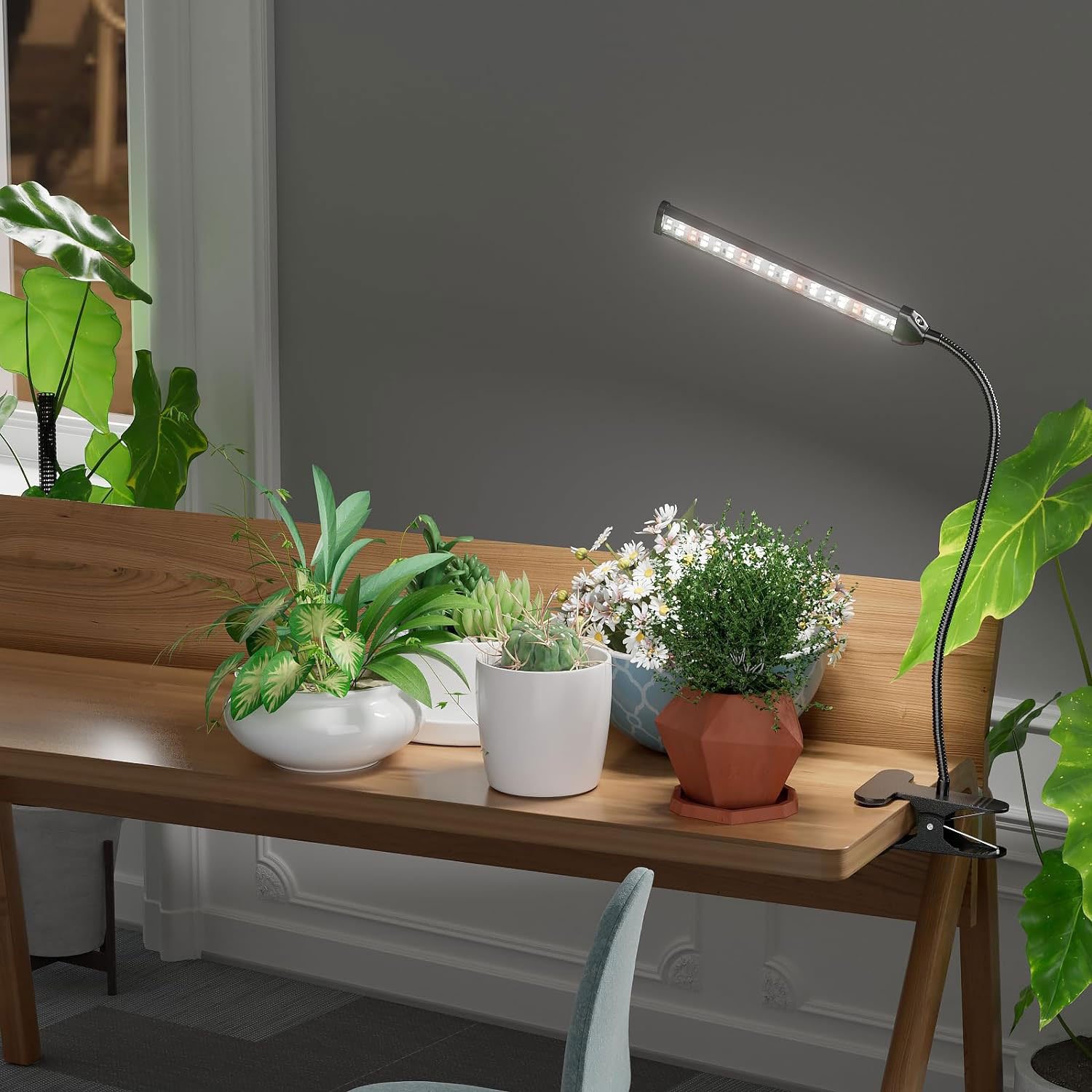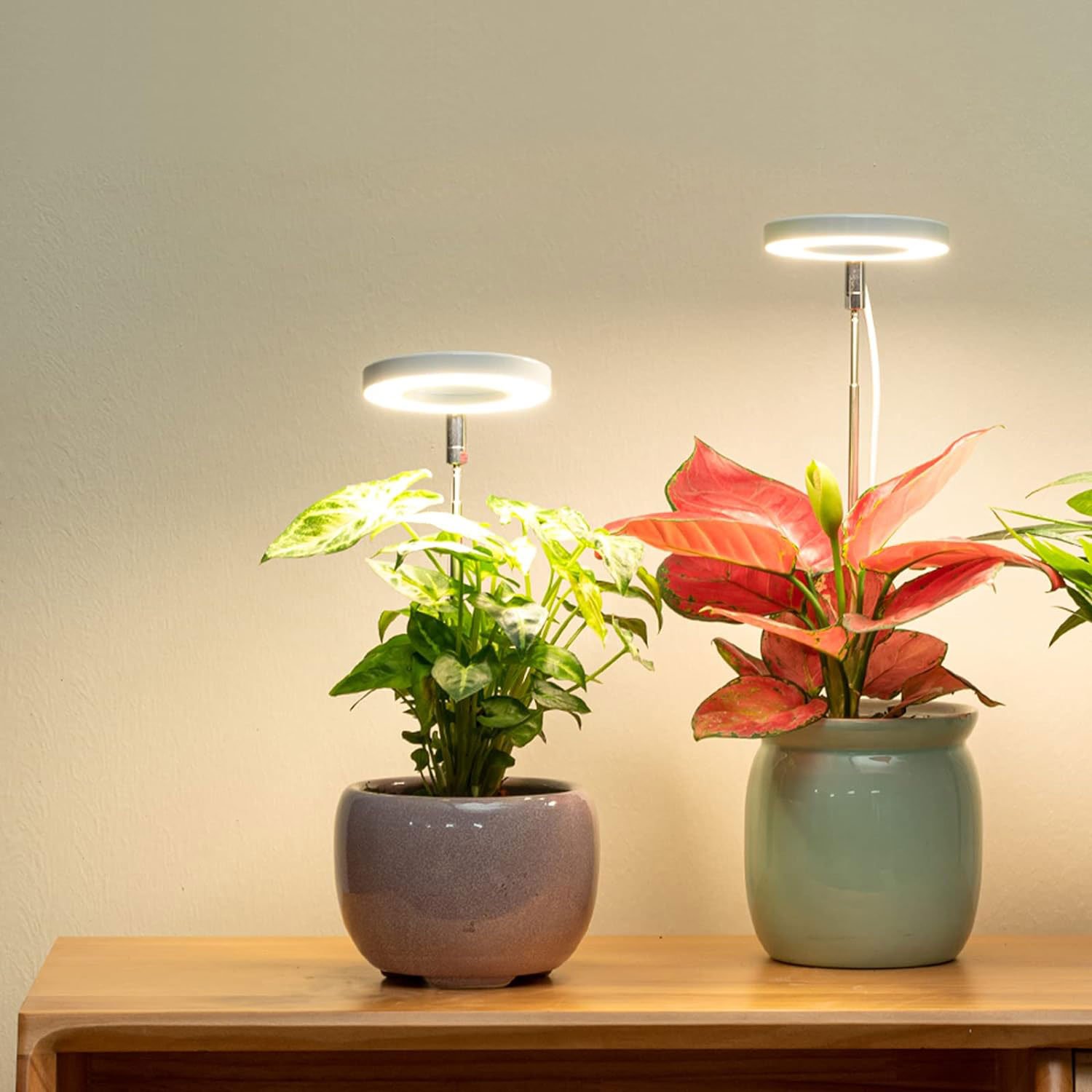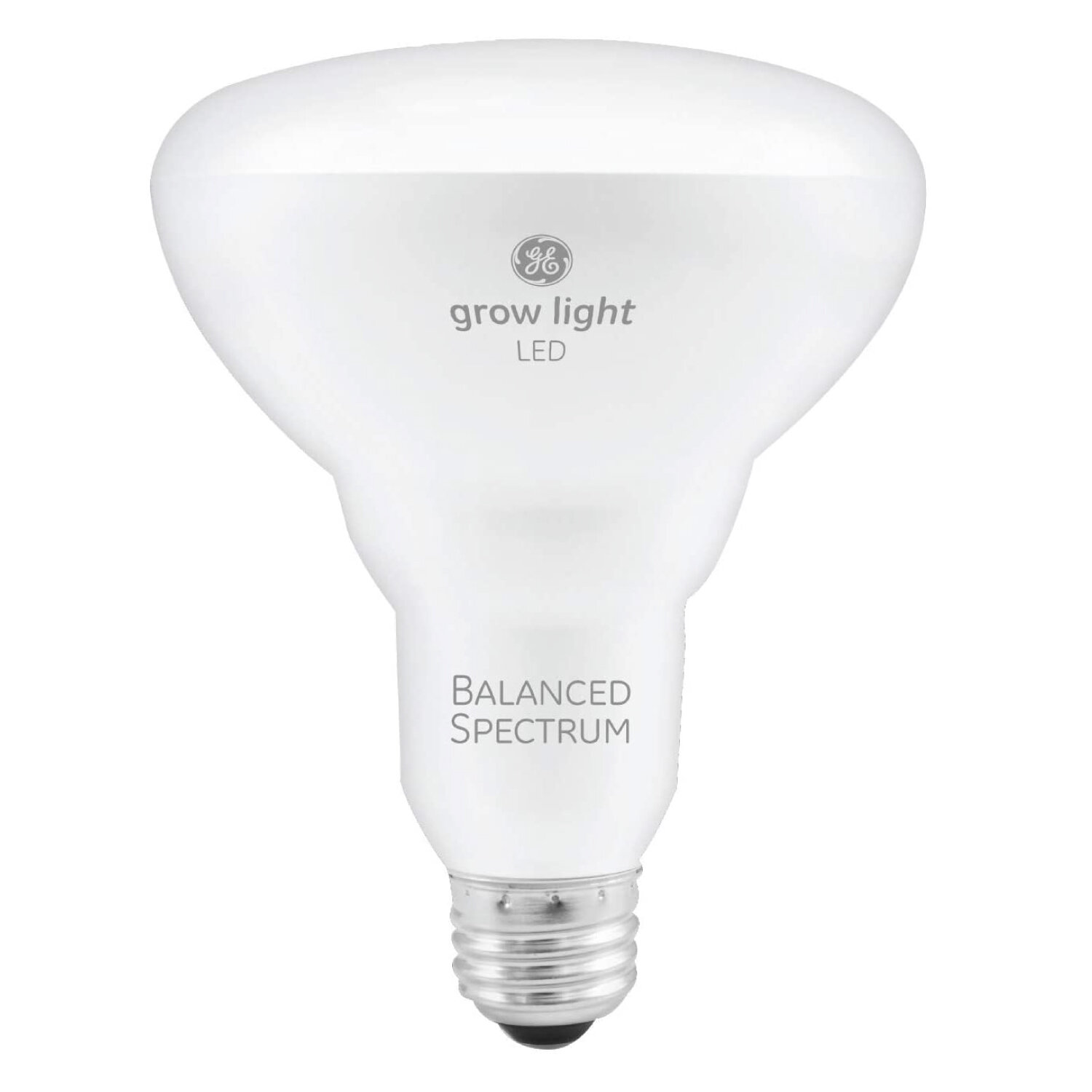Beginner's Guide to Choosing and Using Grow Lights
As an Amazon Associate I earn from qualifying purchases.
Having a room, or an entire home, with little to no light is a common struggle when trying to own houseplants; however, grow lights allow one to establish a thriving plant collection year round. Most plants require at least a smidgeon of light to survive as light is food for plants. Grow lights are specifically designed to serve as a substitute for natural sunlight, allowing for photosynthesis and therefore growth, blooms or even produce.
I have a collection of vintage tins full of succulents and cactus on top of my fridge and have been using grow lights to make sure they get their needs met and it has been a learning experience! Most lights and light bulbs are made for humans, meaning they are low on the spectrum as we are just trying to see, not absorb food. Lights for plants can be full spectrum, or target one specific area, to help your plants flourish. To help you with this process I have outlined the key types of grow lights, the colors, and how to properly use them.
Grow Bulbs vs. Grow Lights
Grow bulbs are a great option in that it allows you to swap out your “human” bulbs for these plant ones in any of your current light fixtures or lamps. This option is the cheapest but has a few downfalls. These bulbs don’t always offer a full spectrum and, because our light fixtures weren’t specifically designed for plants, you may end up with uneven lighting or difficulty placing the light source at a correct distance.
Grow lights are more expensive but allow for the most plant success. Since they were designed specifically for this purpose, they will provide more even lighting, for multiple plants. Many offer a full light spectrum or even the capability to switch between certain colors when targeting certain types of growth. Grow lights can be attached to walls and ceilings, stuck into the plant, via clamps, the underside of shelves and cabinets, or in my case, my refrigerator via a magnet!
You do not want to place a bulb in your ceiling lights as it will have no effect on your plants unless you happen to have a hanging plant right below. Lights need to be within 6-24 inches (15-60 cm) depending on the type for it to be effective. See my section below on light placement for more specifics.
What Type of Light Should I Use?
There are three main types of light you can use in your grow light: incandescent, fluorescent and LED.
- Let's start with the weakest option. Incandescent lights are the cheapest but they also are the least efficient and have a high heat output.
- Fluorescent lights are probably the most well known as they provide a wide spectrum of light and put out low heat. These are more expensive than incandescent lights but also more energy efficient.
- LED is the new kid on the block and is definitely the best option in my opinion. LEDs are the most energy efficient, have the lowest heat output, and have a full light spectrum perfectly targeted to your plants. Also, LEDs often offer options that allow you to switch between different lights or combine certain ones. My light switches between red, blue and a combo of both. I have some LED light options linked at the bottom of the page.
What Color Light is Best?
Alright time for some science. The light spectrum ranges through red, orange, yellow, green, blue and violet. The colors at the far ends are most useful to plants but all colors are absorbed to some extent. When purchasing your grow light, make sure to read the packaging as it will outline what spectrum is provided. Full spectrum is always the best choice or one that offers a mix of red and blue (which is what my light has in the pictures). Different colors serve different purposes which I will outline below.
Blue light (and for the most part violet) is extremely important as it is how our plants get chlorophyll and therefore grow and strengthen their foliage.
Red light is needed for flowering varieties. You must be cautious when using this as too much red light can kill your plant which is why a lot of grow lights offer a mix of both red and blue so your plants are getting all their needs met.
Green and yellow light is said to have minor benefits when it comes to germinating seeds but otherwise is not essential to your plant.
How do I Place and Use the Light?
Ideally, your light would be placed above the plants as that simulates sunlight the best and also allows for the most even coverage. I recognize this isn’t always possible, mine is attached to the side of my fridge and lights my plants from the side and top. Incandescent lights need to be at least 24 inches above your plants. Fluorescent has a lower heat signature and can be 12 inches while a LED can be as close as 6 inches. You will have to adjust your light over time as your plant grows. Check regularly to make sure nothing is getting burned. The height of your light placement will affect the length of time you leave it on.
Depending on the time of year and type of plant, the amount of light your plant needs varies. Flowering varieties and vegetables need 12-16 hours of light a day. Remember that a minimum of 8 hours of darkness a day is important too. Nighttime is when a plant breaks down the energy it got from the light. Most grow lights will have timers set on them. Mine turn on around 7am and run for 12 hours everyday. If your plants are farther from your light, it will absorb less. So if you have an incandescent bulb, you may need to leave your light on longer than you do with a LED bulb that is 6 inches away.


